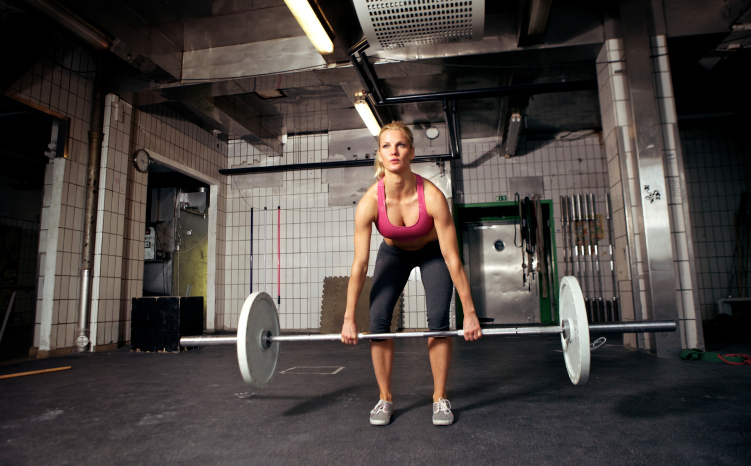Land-based exercise tips for swimmers.
The weather is warming. The skies are lighter. And chances are you have your sights set on that first big race of the season that involves swimming (triathlons, anyone?).
While doing pool drills, learning how to breathe on both sides, and practicing sighting and flip turns, is vital to your training. And remember: training out of the water is just as important.
Dry-land swim training can improve your performance as a swimmer and, according to Olympic Coach E-Magazine, working on strength and power can improve your recovery time and reduce your risk of injury.
This season, consider these exercises in the gym, developed by Justin Heinle, coach at Tidewater Performance Center in Gloucester, Virginia.
Dead Lift
Consider this great exercise to work upper and lower body, as well as core.
Picking heavy weight up off the floor while standing on two legs develops the glute strength needed to kick effectively during the swim and forces the swimmer to work on shoulder girdle stability.
Pulling heavy weight from the floor also adds stress to the core that cannot be found in any other exercise. Efficient swimming requires engaging the muscles of the core to move through the water in a streamlined position.
Single Leg Dead Lift
The single leg dead lift offers many of the same benefits as the dead lift. However, if an athlete is stronger on one leg or the other, then the dead lift all by itself can add to the asymmetry.
The single leg technique does not allow the swimmer to lift as much weight, but does enable an opportunity to focus on asymmetries that may exist.
Adding to the functionality of this movement is that the single leg technique mimics flutter kicking.
Tabata Conditioning
Conditioning for aerobic capacity is what helps an athlete maintain a consistent stroke that cuts through the water for an extended period of time.
However, when your training only involves doing the same thing repetitively, you open yourself up for potential injuries.
Introduce Tabata to your training, which is working in a cycle of 20 seconds of intense exercise and 10 seconds of rest or recovery for four minutes.
Dry land training that integrates kettle bell swings, ropes, sprints, body squats, sleds, bike and row machine sprints all in the Tabata style format will help you in in your swim.

